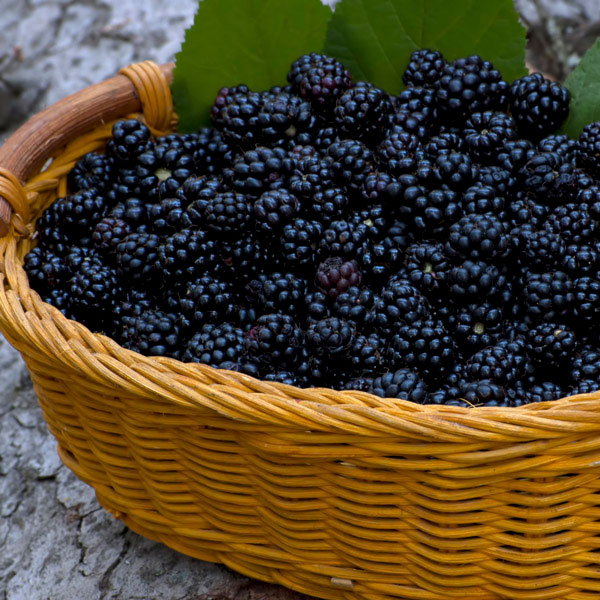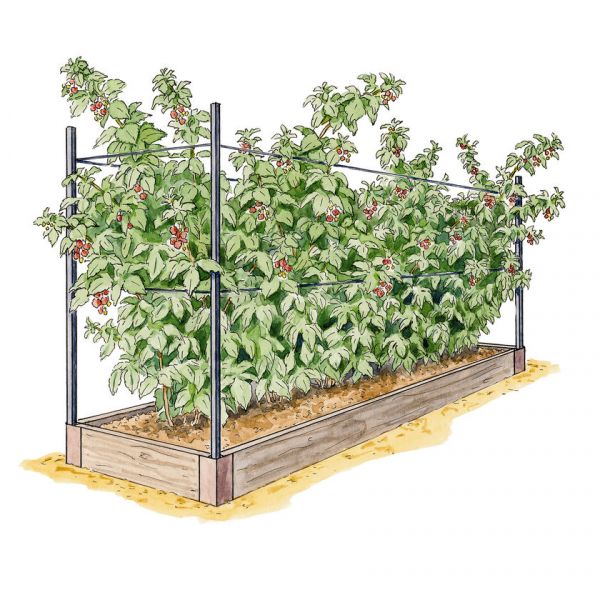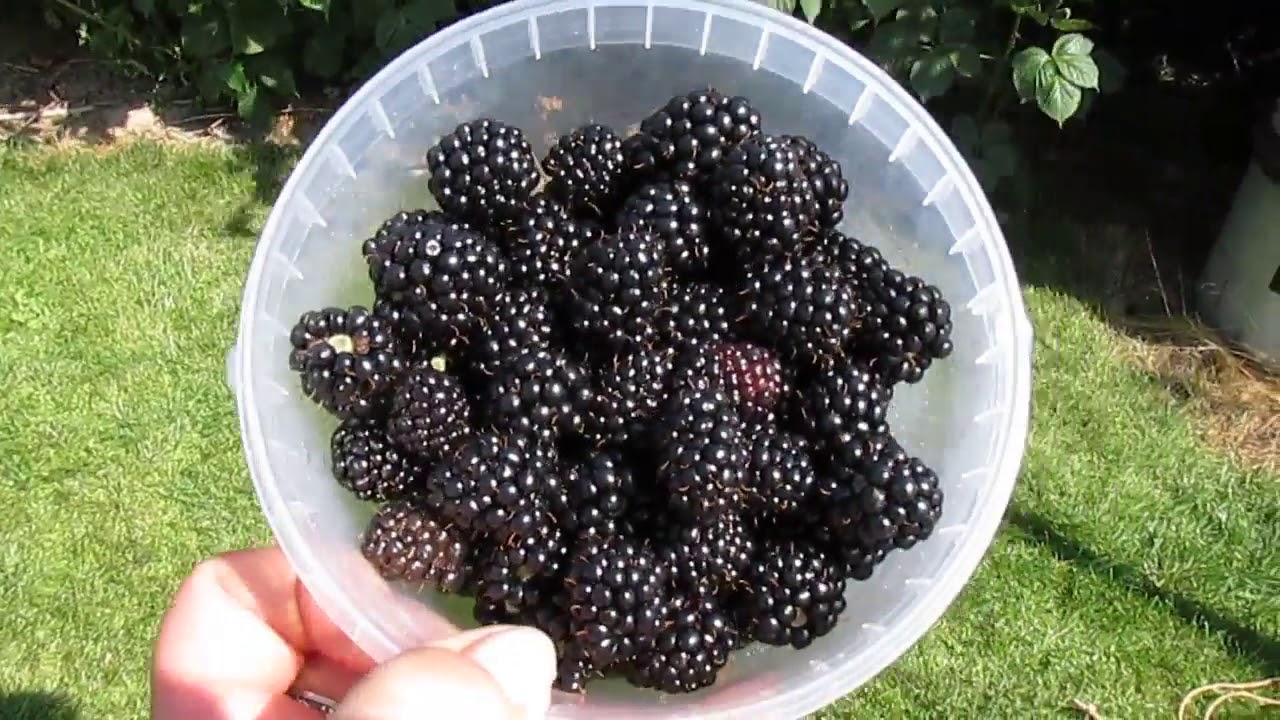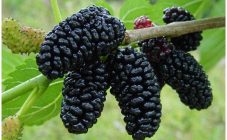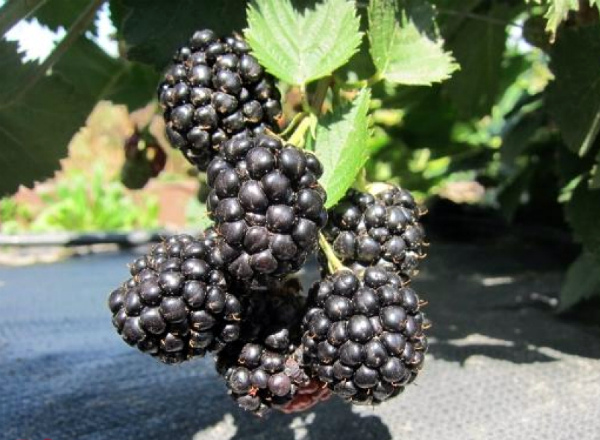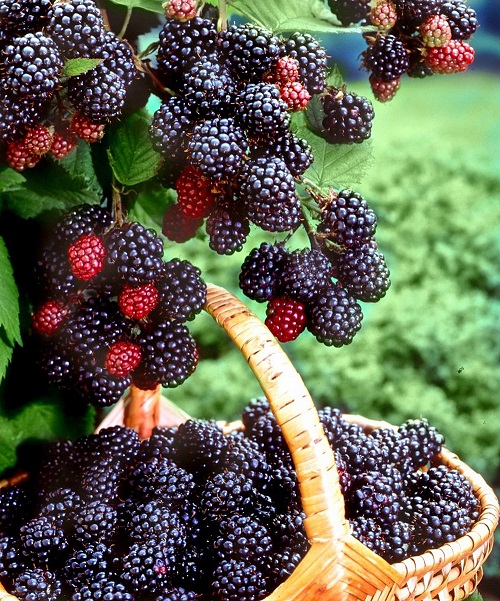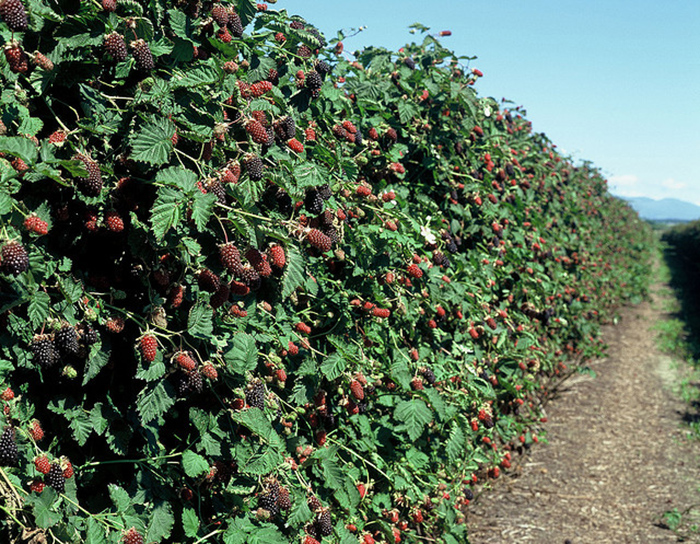Content:
Blackberry Chester Thornless as a separate variety was bred back in the 70s of the last century in one of the US laboratories. The basis for the emergence of the plant was the Thornfrey and Darrow varieties.
Description of the variety
The characteristic of the bush indicates that it is semi-creeping, light brown in appearance, can grow up to 3 meters.
The stems of the plant are covered with trifoliate leaves. Fruiting buds are located immediately at the dark green base of the leaf. With the arrival of the warm period, the blackberry bush is covered with pale pink flowers. The yield is very high: one fruit seed contains dozens of large berries.
Important! Fruit should be expected at the end of August.
As they ripen, the berries acquire a more intense charcoal color. They have a conical shape with a length of up to 3 cm.The weight of one fruit, including its bone part, is about 5-8 g.
Unlike the Peat variety, Chester Thornless bushy blackberry is not cloying, it has a sweet and sour taste. It is suitable for dietary nutrition and is often recommended in the case of gastrointestinal diseases, metabolic disorders.
Advantages and disadvantages
The description of the variety will be incomplete if you do not indicate its main advantages and disadvantages.
So, the strengths of the plant should be called:
- good yield;
- resistance to frost and sudden changes in temperature;
- high nutritional and dietary value;
- the possibility of transportation over long distances without prejudice to the species and health of shrubs;
- aesthetics - this variety is often used to decorate the garden;
- thanks to their deep root system, blackberries can survive long dry periods.
Important! With proper preparation for winter, Chester blackberries can withstand up to -30 degrees.
The disadvantages of the plant include:
- the need for wrapping in the winter in some (especially cold) regions;
- the plant does not withstand long rainy periods, and also does not produce much fruit if it grows in dark lowlands, ravines.
Planting Chester Thornless Blackberry Saplings
Site selection and preparation for landing
Every blackberry lover has the opportunity to plant a blackberry in his garden. To start planting, the plant must have at least 2 developed stems, as well as formed roots and buds.
A dense yield can be obtained if the place for the plant is correctly selected. The variety loves sunny places, but this does not mean that the plant should be in direct sunlight all day. It is better if the place is level so that the roots of the plant can access air and water.
Selection and preparation of planting material
Planting should be carried out in neutral or slightly acidic soil. The land on which the mother-and-stepmother, plantain, leek or chamomile have already grown is perfect. Agronomists warn to plant all varieties of blackberries on the land where potatoes or tomatoes were previously grown - these crops choose manganese and iron from the soil.
To prepare the garden, you need to complete the following tasksniya:
- dig holes to a depth of about 30 cm; the distance between them should not be less than 2.5 meters;
- the dug soil is mixed with fertilizer - potassium sulfate;
- moisten the wells themselves with water.
Important! The following proportion of fertilizer will be optimal: per 1 sq.m. soil - 20-50 g.
Step-by-step planting process
Chester thornless blackberries are planted in 6 basic steps:
- Seedlings are cleaned of dried or damaged parts, dipped in clay slurry;
- Insert into the well. The roots are spread evenly throughout the pit. The root bud should be placed slightly (about 2-4 cm) below the soil level;
- The seedling is covered with previously prepared soil;
- Saplings are generously watered;
- The area around the trunk is covered with peat, tree bark, needles or sawdust;
- The total height of the bush after planting should be approximately 20-25 cm. If it is too tall, prune it.
Correct care of the variety
Watering and loosening the soil
Special care for this type of blackberry is not needed. If it rains from time to time, the plant may not be watered at all. It is recommended to dig the row spacings about once every 3 years. 2-3 years after planting, the plants can be planted for the first time between the rows of vegetable crops. They will help loosen the soil a little. It is not necessary to do this annually.
Top dressing of blackberry bushes
The characteristic of the variety makes it clear that it needs to be fertilized once every 4 years. For this purpose, various options for phosphorus-potassium fertilizers are suitable, in particular:
- potassium nitrate;
- superphosphate;
- nitrophosphate.
As well as when planting seedlings, the proportion of fertilizer should be 20-50 g per square meter. Fertilization can be carried out either in early spring or in late autumn.
Support for bushes
Growing blackberries can be carried out on a special vertical trellis. To perform such a support, wooden posts with a height of 1.5-2 meters are driven into the ground at a distance of about 7 meters from each other. Several rows of strong lace are pulled between the sticks. Flexible young shoots must be tied to the structure with twine.
Harvest
When growing blackberries, you can expect 6 weeks of fruiting. As a rule, the beginning of this period falls on August 10-15. In just one season, almost 20-22 kg of berries can be harvested from one bush.
Do not rush to pick the berries as soon as they turn black. At this time, they can still be sour. The taste of the fruit is revealed as much as possible after a gray bloom appears, and the berries themselves soften. Remove all berries from the bush by the end of the season, even if there are a lot of them. This will contribute to an even better harvest for the next year.
Important! The fruits of the variety can be stored for several weeks in a dark, dry room. The berries washed under running water can be preserved or frozen.
Pruning and shaping the berry bush
Just like rubus fruticosus, Chester Thornless can be pruned no earlier than 2 years after disembarkation. It is better to carry out this procedure in late autumn. You need to cut out all old shoots that have already dried up or are not bearing fruit. It is better to leave only 5-7 young shoots with a light brown color. From now on, circumcision should be performed annually.
Shrub formation is an important part of overall blackberry care. Chassera Thornless stems are quite flexible. Forming the appearance, you need to separate the young shoots from the old ones. Young ones that are just growing up are neatly laid out along the column. Agronomists recommend using one of the following options laying out the stems:
- fan;
- by rope method with stalking in one direction;
- by rope method with stems laying in two directions.
After the end of fruiting, the tops of the main shoots are cut off. New ones remain in their place.
Blackberry breeding methods Chester Thornless
The description of this blackberry variety in the scientific literature makes it clear that reproduction isth can happen in two ways:
- Pinning the top. In the middle of summer, the upper part of the shoot is cut off and planted in the ground, like a seedling;
- Propagation by cuttings.It should also be performed in the summer, the upper part of the stem is cut off and placed in a solution of indolylbutyric acid. Plant in a pot for 20-30 days and keep in a greenhouse all this time. Planting in the ground can be carried out immediately after the root system is formed.
Preparing Chester Thornless Blackberries for Winter
To protect the plant from frost, its flexible stems are bent to the ground. From above, you can cover the plant with a variety of improvised heaters. Suitable: foil, fallen leaves, old mattress or carpet, and the like.
As it is clear from the above, the Chester Thornless blackberry is a profitable and unpretentious plant. It gives a good harvest and can grow in almost any region of the country.
Video


